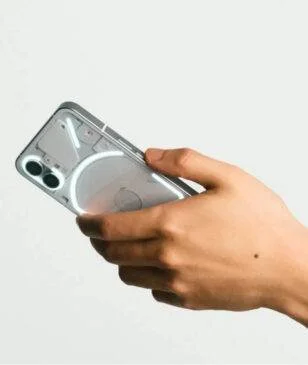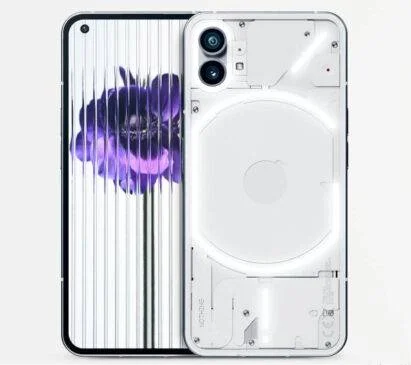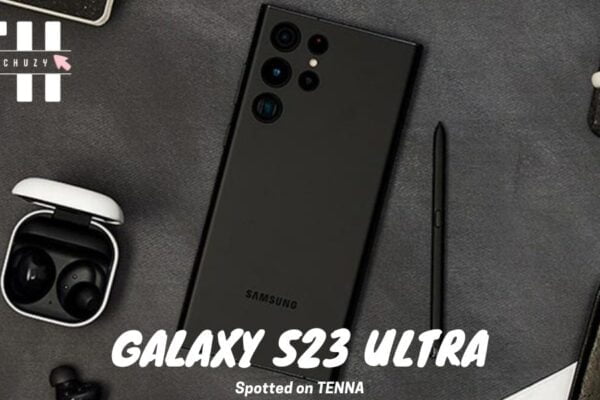Introduction
The Nothing Phone 1 is the first smartphone from Nothing, a new consumer technology company started by OnePlus co-founder Carl Pei. With its unique transparent back design showing the phone’s interior components, the Nothing Phone 1 aims to offer a differentiated product in a crowded smartphone market.

Nothing Phone 1 Key Features and Specifications
| Feature | Details |
|---|---|
| Display | 6.55-inch OLED, 120Hz refresh rate |
| Rear Camera | 50MP main + 50MP ultrawide |
| Front Camera | 16MP |
| Chipset | Qualcomm Snapdragon 778G+ 5G |
| RAM | 8GB/12GB LPDDR5 |
| Storage | 128GB/256GB UFS 3.1 |
| Battery | 4,500 mAh, 33W wired charging, 15W wireless charging |
| OS | Nothing OS based on Android 12 |
| Colors | White and Black front with transparent back |
| IP Rating | IP53 water and dust resistance |
| Weight | 193.5g |
| Launch Date | July 2022 |
| Price | Starts at $399 |
With a unique transparent design, mid-range Snapdragon 778G+ chipset, 50MP dual rear cameras, the Nothing Phone 1 offers an intriguing new option in the competitive smartphone market. The phone starts at an affordable $399, making it a lower-cost alternative to premium flagships.
Design and Display

The most standout feature of the Nothing Phone 1 is its transparent back design, which allows you to see some of the phone’s internal components. Dubbed the “Glyph Interface”, the transparent back has LED strips that light up in different patterns for notifications and charging. This gives the phone a very distinctive look unlike any other smartphone.
The Phone 1 has an aluminum frame with Gorilla Glass front and back. The transparent back panel is made of hardened polymer material called bio-resin. It has a clean, minimalist design with no camera bumps or logos on the back. The phone has an IP53 rating for limited dust and water resistance.
On the front, the Nothing Phone 1 has relatively thick top and bottom bezels with the Nothing logo at the bottom. The selfie camera is housed in a punch-hole cutout at the top left corner.
It features a 6.55-inch OLED display with Full HD+ resolution, HDR10+ support and 120Hz refresh rate for smooth scrolling and animations. The display is flat with no curved edges and has good brightness levels even in sunlight.
Cameras

For photography, the Nothing Phone 1 packs dual 50MP cameras at the back. The main camera uses the Sony IMX766 sensor with OIS (optical image stabilization) while the ultrawide camera provides a 114-degree field of view. There is also a 16MP selfie camera housed in the punch-hole cutout.
In terms of camera features, the Nothing Phone 1 has Night Mode and Portrait Mode along with all the standard modes like Photo, Video, Panorama etc. The camera app offers quick toggles for flash, HDR, timer settings. Video recording goes up to 4K at 30fps.
The dual 50MP camera setup provides good image quality and versatility. In good lighting conditions, the main sensor captures sharp and detailed photos with accurate colors. The ultrawide lens lets you capture expansive landscapes or group photos. Low light photos also turn out decent with the Night Mode.
Performance and Battery Life

The Nothing Phone 1 is powered by the Snapdragon 778G+ 5G chipset, which is an upper mid-range processor built on the 6nm process. This octa-core chip delivers fast performance whether you’re browsing, streaming, gaming or using multiple apps.
You get 8GB or 12GB LPDDR5 RAM options which ensure smooth multitasking. Internal storage is either 128GB or 256GB. There is no microSD card slot for storage expansion though.
On the software front, the Nothing Phone 1 runs Nothing OS based on Android 12. This custom skin keeps much of stock Android’s look and functionality while adding some unique customizations like the Glyph Interface. Software performance is snappy thanks to the 120Hz screen and optimized OS.
Fueling the Phone 1 is a 4500mAh battery which delivers a full day of use on a single charge. You get 33W fast charging support that can charge from 0 to 50% in just 30 minutes. 15W wireless charging is also available. Battery life is above average for this phone class.
Nothing Phone 1 Availability and Pricing
The Nothing Phone 1 was launched globally in July 2022. It is priced starting at $399 for the 8GB/128GB model. The higher-end 12GB/256GB variant costs $449.

It is available to purchase in over 40 countries through online and offline retailers. These include Flipkart in India, O2 in the UK, KDDI in Japan, and Verizon in the US. Limited color options of white and black are available.
For the unique transparent design, strong specs like 120Hz display and 50MP cameras, and affordable pricing, the Nothing Phone 1 makes for an exciting new option in the competitive mid-range smartphone segment. It aims to distinguish itself through design and deliver a smooth software/hardware experience.
Conclusion
With the Phone 1, Nothing has introduced a smartphone that dares to be different with its futuristic transparent design and Glyph Interface. The device excels in display, camera and software experience while maintaining a relatively affordable price point.
Of course, it remains to be seen how well the phone performs in real-world usage over time. But as a first effort, the Nothing Phone 1 brings something truly unique to the smartphone market. For consumers wanting a transparent phone or options beyond Apple/Samsung, the Nothing Phone 1 is definitely worth considering.
The Glyph Interface adds a bit of pizzazz through its LED strips and light patterns. The overall software is bloat-free and fast. Performance from the Snapdragon 778G+ chip is reliable for day-to-day use. The 50MP camera quality will satisfy casual users.
In a sea of similar-looking glass slab smartphones, the Nothing Phone 1 successfully differentiates itself with a striking transparent design and lighting effects. This avant-garde phone targets younger demographics wanting a cool and customizable device. Priced affordably at under $500, the Nothing Phone 1 makes for an exciting new option with its unique industrial design and mid-range specs.





